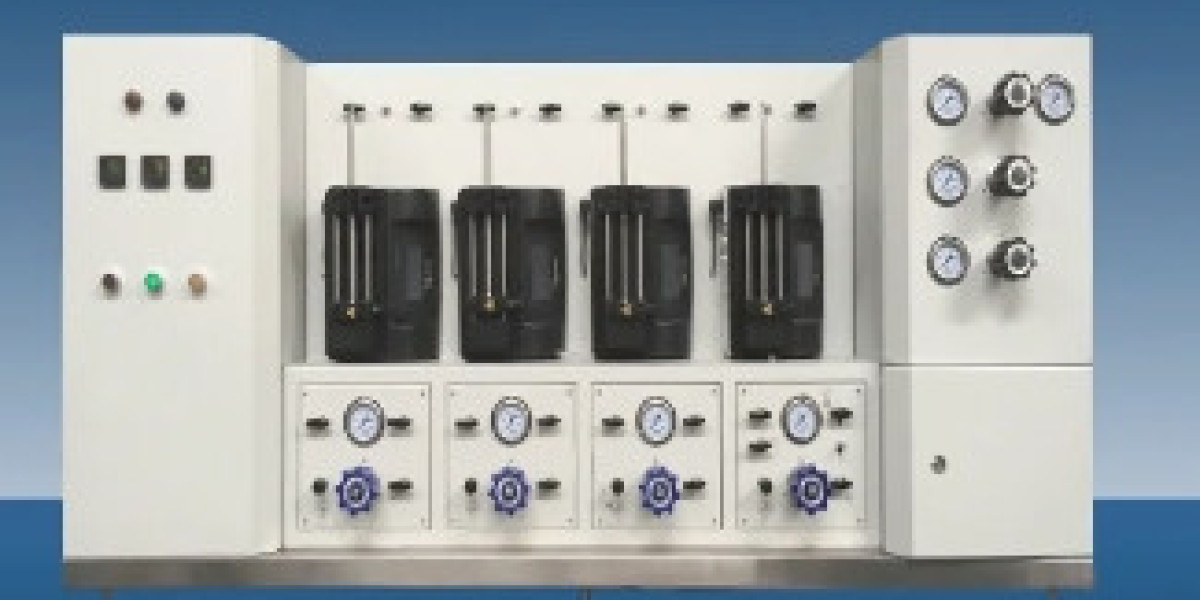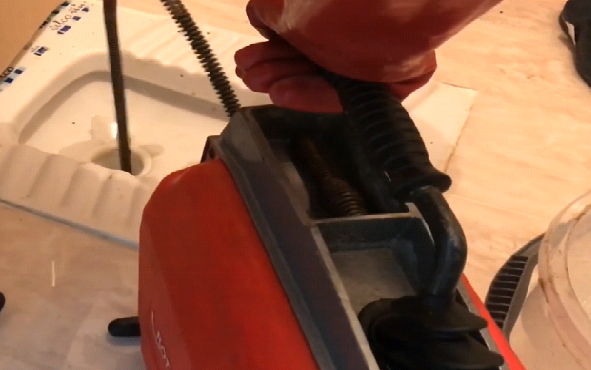Exploring the realm of industrial gas separation processes unveils the indispensable role of fixed bed adsorption units. These units, crucial for purifying gases and liquids in various industries, operate on the principle of selectively removing impurities. The intricate design and functioning ensure efficient removal of contaminants through adsorption mechanisms, making them a cornerstone in process engineering for diverse applications.
Uncover how these units optimize purification processes while enhancing operational efficiency and cost-effectiveness. Gain insights into their pivotal role in ensuring product quality and meeting stringent regulatory standards within industrial settings.
Understanding Adsorption, Desorption, and Regeneration
Adsorption Process
Adsorption is molecules sticking to a solid surface. It occurs when gas or liquid molecules adhere to the surface of an adsorbent material like activated carbon. This process is crucial in fixed bed adsorption units as it helps remove impurities from gases or liquids passing through the unit.
In fixed bed adsorption units, porous materials play a vital role in maximizing adsorption. These materials have high porosity, providing a large surface area for molecules to attach. For example, activated carbon has numerous pores that trap impurities effectively during the adsorption process.
Desorption and Regeneration
Desorption is the opposite of adsorption; it involves releasing the previously attached molecules from the solid surface back into the surroundings. In fixed bed adsorption units, desorbing contaminants allows for cleaning and reusing the adsorbent material efficiently.
Regeneration comes into play after desorbing unwanted molecules. It's about restoring an adsorbent's capacity by removing trapped impurities so that it can be reused multiple times without losing effectiveness. By regenerating activated carbon through processes like heating or purging with steam, its efficiency can be maintained over time.
Pros:
Efficient removal of impurities.
Reusability of adsorbents like activated carbon.
Cons:
Requires energy-intensive regeneration processes.
Over time, some loss in porosity may occur affecting performance.
Properties and Characteristics of Adsorbents
High Surface Area and Porosity
Adsorbents used in fixed bed adsorption units possess a crucial characteristic - they have a high surface area and porosity. This feature allows them to efficiently trap molecules from the fluid passing through them. For instance, activated carbon, a common solid adsorbent, has an extensive network of pores that provide ample surface area for molecules to adhere to.
Solid adsorbents with larger pores can capture bigger molecules effectively due to their size, while those with smaller pores are more suited for trapping smaller substances. The ability of an adsorbent to selectively retain specific molecules is based on its pore size distribution.
Pros:
Efficiently traps molecules
Selectively retains specific substances
Influence of Physical and Chemical Properties
The performance of adsorbents is greatly influenced by their physical and chemical properties. Factors such as particle size, shape, surface chemistry, and polarity play a significant role in determining how well an adsorbent can capture target molecules.
For example, if an adsorbent's particles are too large or irregularly shaped, they may obstruct the flow within the fixed bed unit or reduce contact between the fluid stream and the adsorbent surface. Conversely, well-defined particles enhance mass transfer efficiency during the adsorption process.
Particle size affects flow dynamics.
Surface chemistry determines molecule interactions.
Pore structure influences selectivity towards different substances.
Dynamic Behavior of Fixed-Bed Adsorbers
Breakthrough Point
In fixed bed adsorption units, the feed moves through a packed bed of adsorbent. The breakthrough point marks when the target molecule concentration surpasses the desired limit in the effluent. This occurrence indicates that the adsorbent is no longer effective at capturing additional molecules.
When breakthrough happens, it signifies that the adsorption capacity of the bed has been exhausted. At this stage, further exposure to the feed will not result in additional removal of molecules by the adsorbent material.
Bed Saturation
Bed saturation denotes a state where no more adsorption can take place within a fixed-bed unit. This condition arises when all available binding sites on the adsorbent are occupied by molecules from the feed stream. Once saturation occurs, there is no space left for additional molecules to be captured by the adsorbent.
At this point, even if more feed is passed through the bed, there will be no further removal of target molecules since all active sites on the solid phase are already engaged with particles from previous interactions.
Laboratory Scale and Computer-Controlled Adsorption Units
Small-Scale Testing
Laboratory-scale fixed bed adsorption units are crucial for small-scale testing and optimization processes. These units allow researchers to study the behavior of adsorbents in a controlled environment, helping them understand how different factors influence the adsorption process. For instance, scientists can examine the impact of variables like flow rate, temperature, and concentration on the efficiency of adsorption.
Pros:
Enables precise testing
Facilitates optimization procedures
Cons:
Limited in terms of scalability
Precise Control with Computerization
The integration of computer-controlled systems in fixed bed adsorption units offers unparalleled precision in managing process parameters. By utilizing mathematical models and algorithms, these units can adjust conditions such as flow rates or temperatures automatically. This level of control ensures consistent and accurate results during experiments.
With computer-controlled systems:
Researchers can monitor real-time data.
Adjustments are made swiftly based on feedback.
Without computerization:
Manual adjustments may lead to inconsistencies.
Monitoring data could be more challenging.
Technical Specifications and Features of Adsorption Units
Various Sizes and Configurations
Adsorption units, such as the fixed bed adsorption unit, are available in a range of sizes and setups to cater to different needs. These units can vary from small-scale laboratory models to large industrial systems. The flexibility in size allows for customization based on the specific application requirements.
Some key features found in adsorption units include sophisticated pressure control systems that ensure optimal operating conditions within the unit. These units are equipped with precise temperature regulation mechanisms to maintain consistent temperatures during the adsorption process. Moreover, flow rate monitoring capabilities enable users to track and adjust flow rates as needed for efficient operation.
Pros:
Customizable based on application needs
Precise pressure control ensures optimum performance
Consistent temperature regulation enhances process efficiency
Cons:
Larger configurations may require significant space
Initial setup costs can be high
Automated Regeneration Cycles
One notable feature offered by some advanced adsorption units is the inclusion of automated regeneration cycles. This functionality allows for continuous operation without manual intervention between cycles. Automated regeneration not only saves time but also ensures uninterrupted processing, making these units ideal for applications requiring constant uptime.
These automated cycles involve processes where the adsorbent material is regenerated after reaching saturation levels, ensuring its longevity and sustained effectiveness over multiple usage cycles. By automating this crucial step, operators can focus on other aspects of their operations while maintaining peak performance from the unit.
Steps for Operating an Adsorption Unit with Automated Regeneration Cycles:
Monitor system parameters regularly.
Set up automated regeneration schedules based on usage patterns.
Ensure proper disposal or recycling of spent adsorbents.
Guidelines for Maximizing Efficiency:
Optimize flow rates according to specific requirements.
Regularly calibrate pressure control systems for accuracy. 3.. Conduct routine maintenance checks to prevent downtime.
Process Parameters for Column Study in Adsorption
Feed Concentration
In a fixed bed adsorption unit, the feed concentration refers to the amount of solute present in the influent stream. A higher feed concentration can lead to faster saturation of the adsorbent material, affecting overall efficiency. By optimizing the feed concentration, operators can achieve better utilization of the adsorption capacity and improve performance.
Higher feed concentrations can result in quicker breakthrough curves.
Lower feed concentrations may require longer contact times for effective adsorption.
Flow Rate
The flow rate in a bed column study determines how quickly the influent passes through the adsorbent material. Adjusting the flow rate impacts contact time between the solute and adsorbent, influencing efficiency. Finding an optimal flow rate is crucial for achieving maximum capacity utilization and efficient removal of contaminants.
High flow rates might reduce contact time, leading to incomplete adsorption.
Low flow rates could increase residence time but may not be practical for large-scale operations.
Bed Height
The column performance is significantly affected by bed height as it determines the volume of adsorbent available for interaction with solutes. A taller bed allows for more contact between solutes and absorbents but may require higher pressure drops. Balancing bed height optimizes performance while considering operational constraints like pressure limitations or space availability.
Increasing bed height enhances sorption capacity but requires more energy.
Decreasing bed height reduces sorbent usage but may compromise efficiency.
Particle Size
Particle size plays a vital role in determining how effectively an adsorption unit operates. Smaller particles offer a larger surface area for interactions, potentially increasing efficiency but also causing higher pressure drops due to increased resistance within the column. Operators need to find a balance between particle size and operational parameters to maximize effectiveness without compromising system integrity.
Fine particles enhance mass transfer rates during adsorption processes.
Coarser particles reduce pressure drop across columns but might limit interaction sites.
Challenges and Solutions in Fixed Bed Adsorption Systems
Channeling and Flow Distribution
In fixed bed adsorption units, channeling or uneven flow distribution can decrease efficiency. This occurs when the liquid stream finds paths of least resistance through the bed. It leads to inadequate contact between the adsorbent and the impurities in the feed stream. To tackle this issue, proper bed design, such as using appropriate distributors or packing materials, can help ensure an even flow distribution.
To prevent channeling, ensuring uniform velocity across the entire cross-section of the bed is crucial. This can be achieved by employing suitable support grids or plates within the column to promote an equal distribution of fluid throughout the adsorbent bed. By addressing these factors during system design and operation, channeling can be minimized for enhanced performance.
Pros:
Enhanced efficiency
Improved impurity removal
Cons:
Requires careful design consideration
Increased initial setup complexity
Fouling and Clogging Mitigation
Another challenge faced in fixed bed adsorption systems is fouling or clogging due to impurities present in the feed stream. These contaminants can accumulate on the surface of the adsorbent material over time, reducing its effectiveness in capturing target substances from the liquid phase. Implementing a pre-treatment process before feeding into the fixed bed unit helps reduce fouling by removing larger particulates that could potentially block pores within the adsorbent material.
Regular monitoring of system performance is essential to detect early signs of fouling or clogging. Periodic cleaning procedures involving backwashing or regeneration techniques can help restore optimal functionality to extend operational lifespan.
Key Information:
Pre-treatment processes are vital for preventing fouling.
Monitoring system performance aids in detecting issues promptly.
Comparisons with Other Separation Processes
Advantages Over Distillation
Fixed bed adsorption units offer distinct advantages over distillation. Unlike distillation, which relies on the boiling points of components to separate them, adsorption can effectively remove low-concentration impurities. This makes it ideal for industries where high purity levels are crucial.
Adsorption is particularly useful in scenarios where traditional separation methods like distillation may not be efficient or cost-effective. For instance, in separating volatile organic compounds (VOCs) from air or water, fixed bed adsorption units excel due to their ability to selectively capture specific molecules while allowing others to pass through.
Superiority Compared to Membrane Filtration
When compared to membrane filtration, fixed bed adsorption units showcase superior performance in certain applications. While membrane filtration works by physically blocking particles based on size, shape, and charge, adsorption operates by attracting molecules onto a solid surface.
In situations where contaminants are present at low concentrations or when selective removal is required for specific compounds such as VOCs or other pollutants from fluid phases like air or water, fixed bed adsorption systems outshine membrane filtration techniques. The efficiency of adsorbents in capturing target molecules ensures a more thorough purification process compared to membrane filters that might allow some impurities to pass through.
Future Developments in Adsorption Technology
Advances in Materials
In the realm of fixed bed adsorption units, progress is being made through advances in adsorbent materials. These advancements aim to enhance both selectivity and capacity, making the process more efficient. For instance, researchers on Google Scholar have highlighted the development of novel materials with higher affinity for specific molecules, allowing for better separation of desired components from a mixture.
On this note:
Novel materials improve selectivity and capacity.
Enhanced efficiency through material advancements.
Regeneration Techniques
Another area ripe for improvement within fixed bed adsorption units is regeneration techniques. By refining these methods, energy consumption can be minimized, leading to more sustainable practices. Researchers are exploring innovative ways to regenerate adsorbents efficiently while maintaining their effectiveness over multiple cycles.
Consider:
Minimized energy consumption through improved regeneration.
Sustainability benefits from optimized regeneration processes.
Integration with Other Processes
The integration of adsorption technology with other industrial processes holds promise for creating more efficient and sustainable solutions overall. Combining adsorption with complementary technologies can lead to enhanced performance and reduced environmental impact. Studies on Google Scholar suggest that integrating adsorption into existing systems like distillation or membrane filtration could optimize resource utilization and minimize waste generation.
Key points include:
Enhanced performance by integrating with other processes.
Reduced environmental impact through synergistic solutions.
Final Remarks
The exploration of fixed bed adsorption units has shed light on the intricate processes involved in this crucial separation technique. From understanding adsorption mechanisms to delving into the dynamic behavior of fixed-bed adsorbers, each section has unraveled essential facets of this technology. The technical specifications, challenges, and comparisons with other separation methods have provided a comprehensive view of the capabilities and limitations of fixed bed adsorption systems.
As advancements continue to shape the landscape of adsorption technology, it is imperative for researchers and industry professionals to stay abreast of the latest developments. By embracing innovation and addressing existing challenges head-on, the efficacy and sustainability of fixed bed adsorption units can be further enhanced. This journey towards refining adsorption processes not only ensures operational efficiency but also paves the way for environmentally conscious practices in the realm of separation technologies.
Frequently Asked Questions
What are the key differences between adsorption and desorption?
Adsorption is the process of molecules binding to a surface, while desorption involves releasing these molecules. Adsorption collects substances on a material's surface, whereas desorption removes them.
How do fixed-bed adsorbers differ from other types of adsorbers?
Fixed-bed adsorbers have a stationary bed of adsorbent material where gas or liquid flows through. In contrast, fluidized-bed adsorbers use particles suspended in an upward flow. Fixed beds offer longer contact time for efficient separation.
What factors influence the dynamic behavior of fixed-bed adsorbers?
Dynamic behavior in fixed-bed adsorbers is influenced by factors like flow rate, temperature, pressure, and properties of the adsorbate and absorbent materials. These variables impact the efficiency and effectiveness of the separation process.
What are some common challenges faced in fixed bed adsorption systems?
Common challenges include channeling (uneven flow distribution), breakthrough (saturation point reached), and mass transfer limitations. Addressing these challenges requires proper design considerations, monitoring techniques, and optimization strategies.
How does column study help determine process parameters in adsorption units?
Column studies involve analyzing breakthrough curves to determine parameters like breakthrough time and capacity. This data helps optimize operating conditions such as flow rate and bed depth for enhanced performance of fixed-bed adsorbers.








